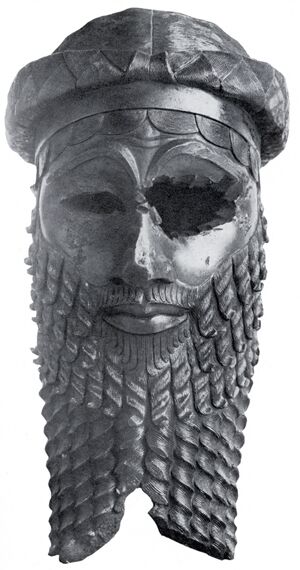Mesopotamian governments are fascinating to study.
Mesopotamian cities started as farming villages. Farming brought in surplus food and the population of the village began to grow. As the gods were the most important beings to the early Mesopotamians, priests, who mediated with the gods and divined their wills, became the most important people in the village. Slowly, priests took on a governing role. Mesopotamian governments were subject to the elements. Climate change intervened in this simple form of governance. In order for farming to continue producing adequate food, the villagers had to begin irrigating the crops. Irrigation required a substantial amount of labor in building and maintaining canals and dams. Organizing this labor required intelligent leadership. While priests were capable men, they now needed assistance from a secular leader who could guide communal labor. Farming was also a big part of Mesopotamian governments.
“Mesopotamian Civilization (2): Everyday Life of Merchants, Temple Priests, and Prostitutes”
For the full “History Unplugged” podcast, click here!
By the time farming villages had grown into the great Mesopotamian cities, both priests and secular leaders were involved in Mesopotamian governments and in governing the increasingly complex society of a city. The secular leader was called the lugal, the strongman. With specialization of labor—people finding lots of different jobs and tasks to do other than farming work—it made sense to have priests fully involved in keeping the gods happy while the lugal oversaw running the city. This was a crucial step in the forming of Mesopotamian governments.
Gradually the lugal became a powerful king who dominated governance of the Mesopotamian city-state. While most of his duties as king were secular, the king had religious responsibilities as well. He, as well as the high priest, was an intermediary between the gods and the people. Kings participated in religious rituals. Common Mesopotamians considered the king as the representative of the city’s patron god, the god’s overseer on earth, so to speak. A king was expected to protect his city, to provide law, order and justice and to be a shepherd to the people, ensuring that widows and orphans were cared for. Kings formed dynasties and leadership passed from father to son. Women, in general, were not involved in politics, but there are instances of women ruling a city. A city-state is a complex entity and running it involved a civil bureaucracy of Mesopotamian governments’ officials, tax collectors, scribes and ward bosses. In Mesopotamian governments, government officials took the tithes from farmers and other workers, they oversaw the communal labor necessary for maintaining aqueducts, irrigation canals and water resources. They assisted merchants and traders when necessary, seeing to a caravan’s protection. Most kings sustained an active military that defended the city and went on military campaigns when the city needed more land or water resources. Kings also worked closely with the priesthood, both the en, the chief priest in charge of religious observances and the sanga, the priest involved in running the temple’s business concerns. It wasn’t until the Akkadians came to power, circa 2334 B.C., that Mesopotamian gained its first empire. For most of its history, Mesopotamian city-states each ruled its own area, ruled by a powerful king. Thus, the structure of Mesopotamian governments could almost be described as Federalist.
This article is part of our larger selection of posts about Mesopotamia. To learn more, click here for our comprehensive guide to Mesopotamia.
Cite This Article
"Mesopotamian Governments: How Were They Structured?" History on the Net© 2000-2024, Salem Media.
April 24, 2024 <https://www.historyonthenet.com/mesopotamian-governments>
More Citation Information.

